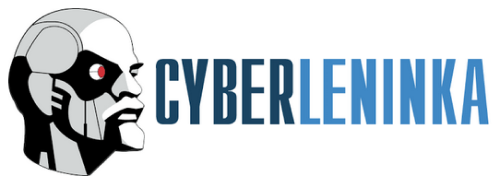Social relations and self-presentation of the youth political leaders of Altai krai and Novosibirsk oblast in VKontakte social media
( Pp. 100-113)
More about authors
Kazantsev Dmitry A.
starshiy prepodavatel kafedry politologii
Altai State University
Altai State University
Abstract:
The object. The article is dedicated to the
research of self-presentation and social relations of the youth political
leaders in VKontakte (VK) social media in Siberian Federal District by example
of Altai Krai and Novosibirsk oblast. This includes the analysis of social and
political capital of the youth political organisations’ leaders in online
environment. The purpose of this research is to distinguish the forms and
contents of self-presentation, the image of the youth political leaders, basing
on their social relations and communications in VK. For this purpose, the
author uses the “TargetHunter” parcer, as well as the R programming language
for the open data harvesting, and Gephi program to create the social media
graph. Conclusions. Basing on the research results, the author concludes that
the youth political leaders actively use social media resources, particularly
VK, to shape their image and promote it in public affairs. Meanwhile, the
process of self-presentation of such leaders is impacted by numerous variables.
It also tends to change its forms. VK is especially effective for political
activity of the leaders who strive to gain their personal social capital, to
create unique and high quality content, and to create channels for steady
communication with their primary audience. As for the youth political
organisations’ heads, their social media space is more miscellaneous and is
usually subjected to clasterization, creating groups. The youth leaders also
represent similar social environment. Therefore, the environment creates the
leaders, as much as the leaders create the environment.
How to Cite:
Kazantsev D.A., (2021), SOCIAL RELATIONS AND SELF-PRESENTATION OF THE YOUTH POLITICAL LEADERS OF ALTAI KRAI AND NOVOSIBIRSK OBLAST IN VKONTAKTE SOCIAL MEDIA. History and Modern Perspectives, 1 => 100-113.
Reference list:
Gradosel skaya G.V. Analiz sotsial nykh setey: Dis.. kand. sots. nauk (22.00.01). M., 2001.
Grigor ev I.D., Bilida A.A., Lapaev A.D. Sotsial nye seti kak instrument politicheskogo vozdeystviya // Studencheskiy. 2019. № 1 (56). S. 47-51.
Kazantsev D.A., Aseev S.YU. Analiz sotsial nykh setey molodezhnykh politicheskikh organizatsiy Novosibirskoy oblasti i Altayskogo kraya // YUzhno-rossiyskiy zhurnal sotsial nykh nauk. 2020. T. 21. № 1. S. 64-85.
Malov. E.A. Fenomen sotsial nykh setey: aktorno-setevoy kontekst, teoretiko-metodologicheskiy analiz: Dis.. kand. sots. nauk: (22.00.01). SPb., 2014.
Miroshnichenko I.V., Ryabchenko N.A. Setevye resursy razvitiya lokal noy politiki // Srednerusskiy vestnik obshchestvennykh nauk. 2015. № 5. S. 38-49.
Ngok L.L. Sotsial nye seti kak mekhanizm formirovaniya imidzha politicheskogo lidera // Voprosy natsional nykh i federativnykh otnosheniy. 2020. № 1 (58). S. 170-175.
Parfenova YU.V. Setevye formy politicheskogo uchastiya v sovremennoy Rossii i postsovetskom prostranstve: Dis.. kand. sots. nauk (23.00.02). SPb., 2016.
Ryabchenko N.A., Malysheva O.P., Gnedash A.A. Upravlenie politicheskim kontentom v sotsial nykh setyakh v period predvybornoy kampanii v epokhu postpravdy // POLIS. Politicheskie issledovaniya. 2019. № 2. S. 93-106.
Smorgunov L.V. Setevoy podkhod k politike i upravleniyu // POLIS. Politicheskie issledovaniya. 2001. № 3. S. 103-112.
SHerstobitov A.S., Bryanov K.A. Tekhnologii politicheskoy mobilizatsii v sotsial noy seti VKontakte : setevoy analiz protestnogo i provlastnogo segmentov // Istoricheskie, filosofskie, politicheskie i yuridicheskie nauki, kul turologiya iiskusstvovedenie. Voprosy teorii i praktiki. 2013. Vyp. 10 (36). № 1. S. 196-202.
Suslov S.I. Setevye agenty politicheskoy internet-kommunikatsii v russkoyazychnoy onlayn-prostranstve: Dis.. kand. sots. nauk (22.00.05). SPb., 2017.
Brand Analytics. Sotsial nye seti v Rossii: TSifry i trendy, osen 2020. URL: https://br-analytics.ru/blog/socialmedia-russia-2020/
Barabasi A.L., Reka A. Emergence of scaling in random networks // Science. 1999. No. 286. Pp. 509-512.
Barnes J.A. (1954). Class and committees in a Norwegian Island Parish // Human Relations. No. 7. Pp. 39-58.
Bavelas A. A mathematical model for group structures // Human Organization. 1948. No. 7 (3). Pp. 16-30.
Bode L., Vraga E.K., Borah P., Shah D.V. A new space for political behavior: Political social networking and its democratic consequences // Journal of Computer-Mediated Communication. 2014. No. 19. Pp. 414-429.
Boulianne S. Social media use and participation: a meta-analysis of current research. Information // Communication Society. 2015. No. 18. Pp. 524-538.
Erdos P., Renyi A. On the evolution of random graphs // Publ. Math. Inst. Hungar. Acad. Sci. 1960. No. 5. Pp. 17-61.
Gil de Z iga H., Copeland L., Bimber B. Political consumerism: Civic engagement and the social media connection // New Media Society. 2013. No. 16 (3). Pp. 488-506.
Granovetter M. The strength of weak ties // American Journal of Sociology. 1973. No. 78 (6). Pp. 1360-1380.
Hon L.C. Social media framing within the Million Hoodies movement for justice // Public Relations Review. 2016. No. 42. Pp. 9-19.
Klofstad C. Civic talk: Peers, politics, and the future of democracy. Philadelphia, PA: Temple University Press, 2011.
Moreno J.L. Who shall survive Washington DC: Nervous and Mental Disease Publishing Company, 1934.
Newcomb T. Personality and social change: Attitude formation in a student community. New York: Dryden Press, 1943.
Radcliffe-Brown A.R. On social structure // Journal of the Royal Anthropological Society of Great Britain and Ireland. 1940. No. 70.
Towner T. All political participation is socially networked New media and the 2012 election // Social Science Computer Review. 2013. No. 31 (5). Pp. 527-541.
Tsai W.-H.S., Men R.L. Social messengers as the new frontier of organization-public engagement: A WeChat study // Public Relations Review. 2018. No. 44 (3). Pp. 419-429.
Watts D.J., Strogatz S.H. Collective dynamics of small-world networks // Nature. 1998. No. 393. Pp. 440-442.
Xenos M., Vromen A., Loader B.D. The great equalizer Patterns of social media use and youth political engagement in three advanced democracies // Information, Communication Society. 2014. No. 17 (2). Pp. 151-167.
Xiong Y., Cho M., Boatwright B. Hashtag activism and message frames among social movement organizations: Semantic network analysis and thematic analysis of Twitter during the MeToo movement // Public Relations Review. 2018. No. 45 (1). Pp. 10-23.
Grigor ev I.D., Bilida A.A., Lapaev A.D. Sotsial nye seti kak instrument politicheskogo vozdeystviya // Studencheskiy. 2019. № 1 (56). S. 47-51.
Kazantsev D.A., Aseev S.YU. Analiz sotsial nykh setey molodezhnykh politicheskikh organizatsiy Novosibirskoy oblasti i Altayskogo kraya // YUzhno-rossiyskiy zhurnal sotsial nykh nauk. 2020. T. 21. № 1. S. 64-85.
Malov. E.A. Fenomen sotsial nykh setey: aktorno-setevoy kontekst, teoretiko-metodologicheskiy analiz: Dis.. kand. sots. nauk: (22.00.01). SPb., 2014.
Miroshnichenko I.V., Ryabchenko N.A. Setevye resursy razvitiya lokal noy politiki // Srednerusskiy vestnik obshchestvennykh nauk. 2015. № 5. S. 38-49.
Ngok L.L. Sotsial nye seti kak mekhanizm formirovaniya imidzha politicheskogo lidera // Voprosy natsional nykh i federativnykh otnosheniy. 2020. № 1 (58). S. 170-175.
Parfenova YU.V. Setevye formy politicheskogo uchastiya v sovremennoy Rossii i postsovetskom prostranstve: Dis.. kand. sots. nauk (23.00.02). SPb., 2016.
Ryabchenko N.A., Malysheva O.P., Gnedash A.A. Upravlenie politicheskim kontentom v sotsial nykh setyakh v period predvybornoy kampanii v epokhu postpravdy // POLIS. Politicheskie issledovaniya. 2019. № 2. S. 93-106.
Smorgunov L.V. Setevoy podkhod k politike i upravleniyu // POLIS. Politicheskie issledovaniya. 2001. № 3. S. 103-112.
SHerstobitov A.S., Bryanov K.A. Tekhnologii politicheskoy mobilizatsii v sotsial noy seti VKontakte : setevoy analiz protestnogo i provlastnogo segmentov // Istoricheskie, filosofskie, politicheskie i yuridicheskie nauki, kul turologiya iiskusstvovedenie. Voprosy teorii i praktiki. 2013. Vyp. 10 (36). № 1. S. 196-202.
Suslov S.I. Setevye agenty politicheskoy internet-kommunikatsii v russkoyazychnoy onlayn-prostranstve: Dis.. kand. sots. nauk (22.00.05). SPb., 2017.
Brand Analytics. Sotsial nye seti v Rossii: TSifry i trendy, osen 2020. URL: https://br-analytics.ru/blog/socialmedia-russia-2020/
Barabasi A.L., Reka A. Emergence of scaling in random networks // Science. 1999. No. 286. Pp. 509-512.
Barnes J.A. (1954). Class and committees in a Norwegian Island Parish // Human Relations. No. 7. Pp. 39-58.
Bavelas A. A mathematical model for group structures // Human Organization. 1948. No. 7 (3). Pp. 16-30.
Bode L., Vraga E.K., Borah P., Shah D.V. A new space for political behavior: Political social networking and its democratic consequences // Journal of Computer-Mediated Communication. 2014. No. 19. Pp. 414-429.
Boulianne S. Social media use and participation: a meta-analysis of current research. Information // Communication Society. 2015. No. 18. Pp. 524-538.
Erdos P., Renyi A. On the evolution of random graphs // Publ. Math. Inst. Hungar. Acad. Sci. 1960. No. 5. Pp. 17-61.
Gil de Z iga H., Copeland L., Bimber B. Political consumerism: Civic engagement and the social media connection // New Media Society. 2013. No. 16 (3). Pp. 488-506.
Granovetter M. The strength of weak ties // American Journal of Sociology. 1973. No. 78 (6). Pp. 1360-1380.
Hon L.C. Social media framing within the Million Hoodies movement for justice // Public Relations Review. 2016. No. 42. Pp. 9-19.
Klofstad C. Civic talk: Peers, politics, and the future of democracy. Philadelphia, PA: Temple University Press, 2011.
Moreno J.L. Who shall survive Washington DC: Nervous and Mental Disease Publishing Company, 1934.
Newcomb T. Personality and social change: Attitude formation in a student community. New York: Dryden Press, 1943.
Radcliffe-Brown A.R. On social structure // Journal of the Royal Anthropological Society of Great Britain and Ireland. 1940. No. 70.
Towner T. All political participation is socially networked New media and the 2012 election // Social Science Computer Review. 2013. No. 31 (5). Pp. 527-541.
Tsai W.-H.S., Men R.L. Social messengers as the new frontier of organization-public engagement: A WeChat study // Public Relations Review. 2018. No. 44 (3). Pp. 419-429.
Watts D.J., Strogatz S.H. Collective dynamics of small-world networks // Nature. 1998. No. 393. Pp. 440-442.
Xenos M., Vromen A., Loader B.D. The great equalizer Patterns of social media use and youth political engagement in three advanced democracies // Information, Communication Society. 2014. No. 17 (2). Pp. 151-167.
Xiong Y., Cho M., Boatwright B. Hashtag activism and message frames among social movement organizations: Semantic network analysis and thematic analysis of Twitter during the MeToo movement // Public Relations Review. 2018. No. 45 (1). Pp. 10-23.
Keywords:
social media analysis, youth political leaders, political leadership, social relations, self-presentation.
Related Articles

2. Political Science Pages: 41-43 Issue №7176
POLITICAL LEADERSHIP AND POLITICAL AUTHORITY
political leadership
political authority
society
education
guide
Show more
Socio-economic Research Pages: 102-106 DOI: 10.33693/2223-0092-2022-12-6-102-106 Issue №22403
Public Trust of the Population in the National Guard of the Russian Federation in the Context of Sociological Research
Public trust
sociological approaches
social relations
performance evaluation
Show more
7. Theory and history of law and state; History of law and State teachings Pages: 82-85 Issue №10327
THE INSTITUTION OF «LOBBYING»: THE TWO SIDES OF THE SAME COIN
lobbying
legal solutions
corruption
social relations
the state
Show more
12. OTHER Pages: 245-248 Issue №9149
To the question about the causes and conditions of committing intentional destruction or damage of another's property (art. 167 of the Criminal Code of the Russian Federation) (on the example of the Republic of Bashkortostan)
destruction or damage of property
social relations
socio-psychological and biological characteristics of the offender
victimization of the victim
psychophysiological anomalies
Show more










